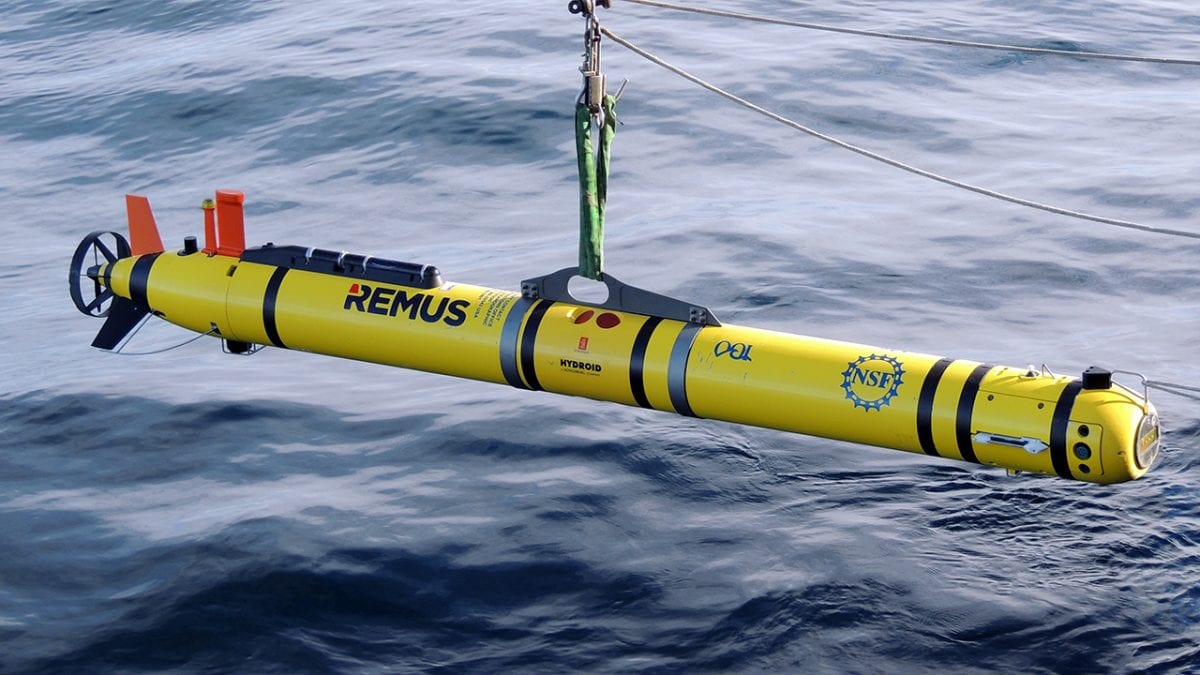Image
Fast “Flyer”
April 8, 2018The NSF-funded Ocean Observatories Initiative Pioneer Array includes two types of observing systems: fixed moorings and mobile vehicles, such as this REMUS 600. With its powerful built-in propulsion system, a REMUS vehicle can conduct detailed, pre-programmed missions in a relatively short time over long distances, reaching maximum speeds of up to 4 knots and covering up to 100 miles before its batteries need recharging. Sensors on these autonomous underwater vehicles (AUVs) can measure a wide range of ocean water characteristics, including dissolved oxygen, optical properties, and nitrate, an important nutrient for marine plants and algae. (Photo by John Lund, Woods Hole Oceanographic Institution)
Image and Visual Licensing
WHOI copyright digital assets (stills and video) contained on this website can be licensed for non-commercial use upon request and approval. Please contact WHOI Digital Assets at images@whoi.edu or (508) 289-2647.

